Because I'm shooting more macro these days, I needed a remote trigger release unit that could fit my Nikon D300 and didn't cost an arm and a leg.
The wired remote trigger from Nikon (MC-30) cost $ 80. NEW! So like most of us I tried to find it for less on Ebay and I was willing to even get slightly used in good condition.
To my surprise, what I saw, was a list of wireless remote triggers from Hong Kong with a price range of 20 to 50 US Dollars. What? No, that sounds too good to be true.
I knew that Nikon offer a wireless version (ML-3) but it cost two hundred bucks! It looks pretty good and also has a motion trigger option. I'm sure this option could be very useful for some, but at the moment it's not something I need.
The huge price difference made me very skeptical. And even though I was set on buying a wired version, at these prices, I was willing to give the cheap wireless unit a shot.
So I decided on the unit made by "YoungNuo" (???) and pressed the "buy it now" button, from the ebay store, based in Hong Kong, that has a 99.7% positive feedback rating and the total price was $ 21.80 (shipping included).
I received the package 10 days later in an padded envelope, not the best packaging in the world but the box arrived in good condition.
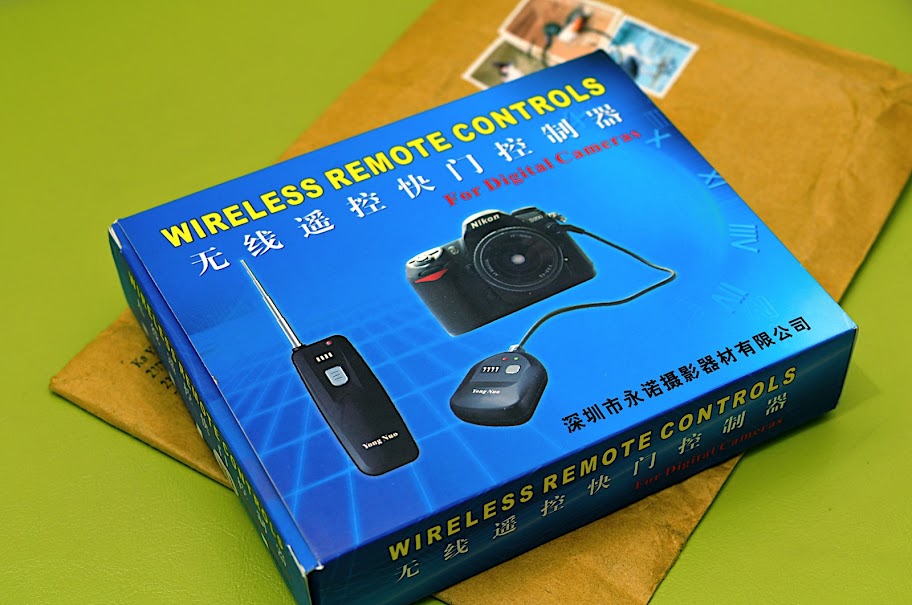
The package included a transmitter, a receiver, a battery and and very clear instructions.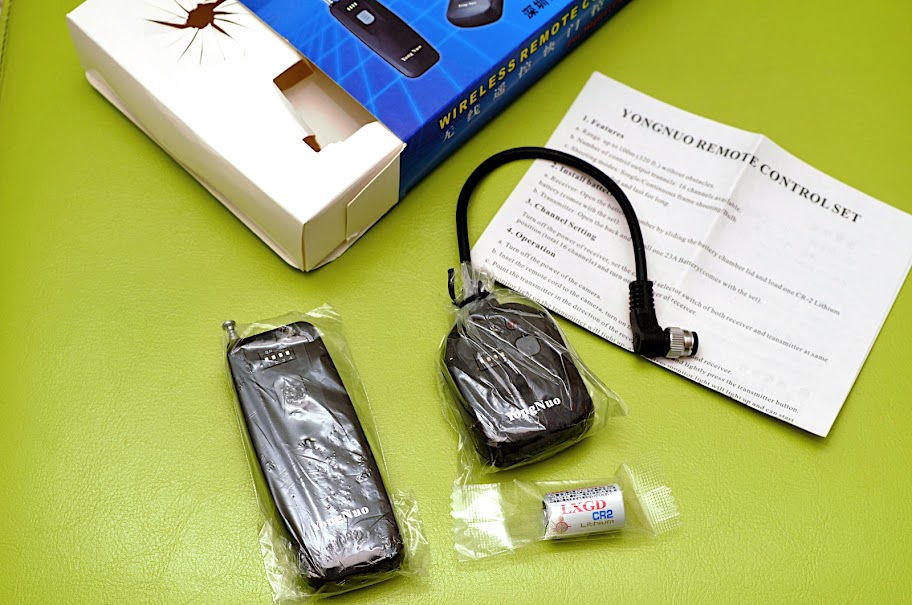
I inserted the battery in the receiver. The Transmitter already had its battery in (ready to work strait out of the box)

The construction quality has an OK feeling, nothing special but not a cheap - flimsy appearance, it kind of feels like your regular TV remote control. It also has this tacky retractable antenna that looks the same as that old 80's wireless phone antenna. (Personally I'm OK with it).
Before you use it, you have to sync the codes on the receiver and transmitter.
Here you have a choice of 16 different channels. The four little switches need to be reached with the help of a pointy tool like the tip of a ballpoint pen. I think it's a good thing, I was a bit worried that these switches were too exposed to accidental gripping.
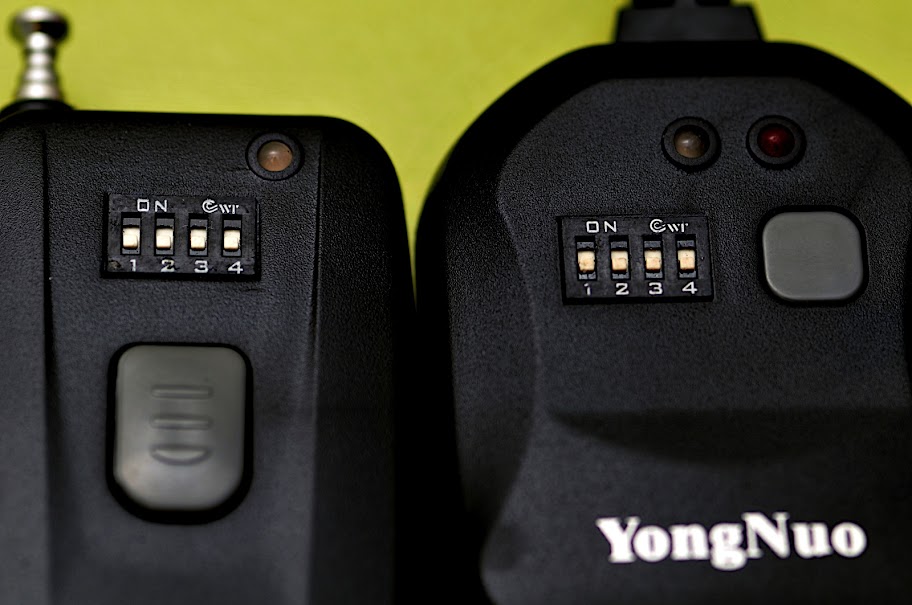
Because the unit is a 10 pins plug compatible with the N90, I decided to experiment first on my old camera, in case the system wasn't perfect and possibly short circuit my D300 electronics (hey you never know).
The plug fits in precisely and the securing ring screws nice and tight with no resistance.
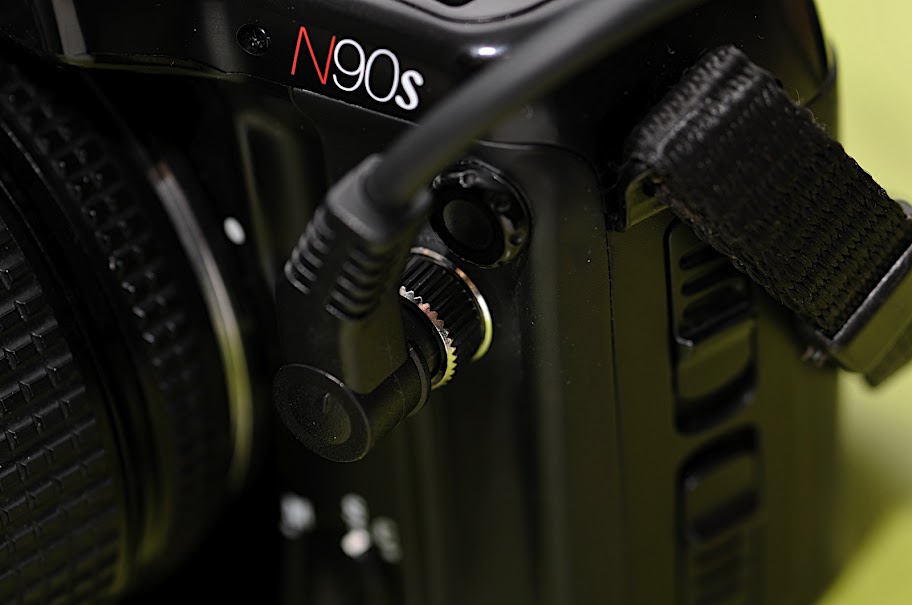
The instructions say to turn off the camera, plug in the receiver cord then turn the camera and the receiver back on . A led light will light up red on the receiver.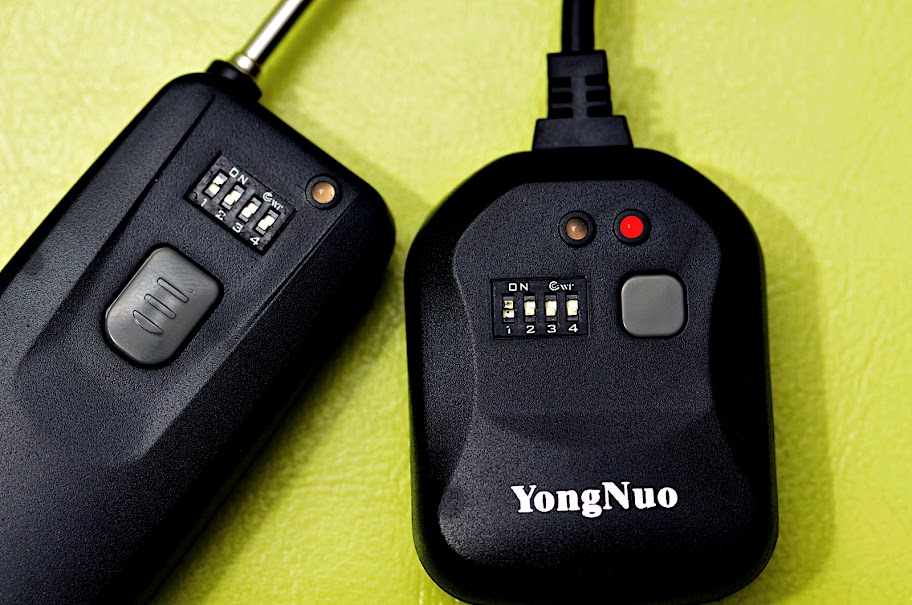
At first you press halfway to activate the autofocus exactly like on your camera. The led light will turn on green on bought units.
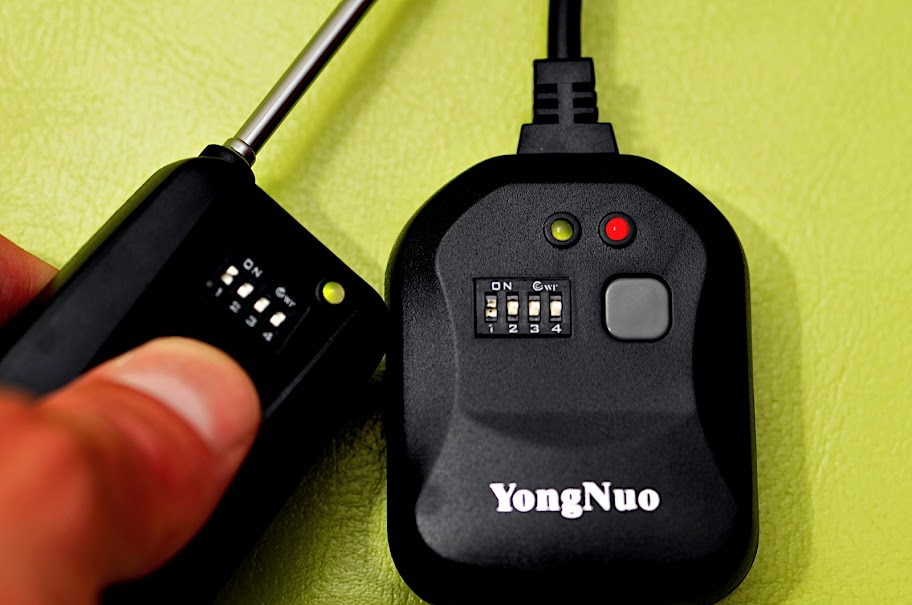
Then press all the way down and the led light will turn red when the camera takes the picture.
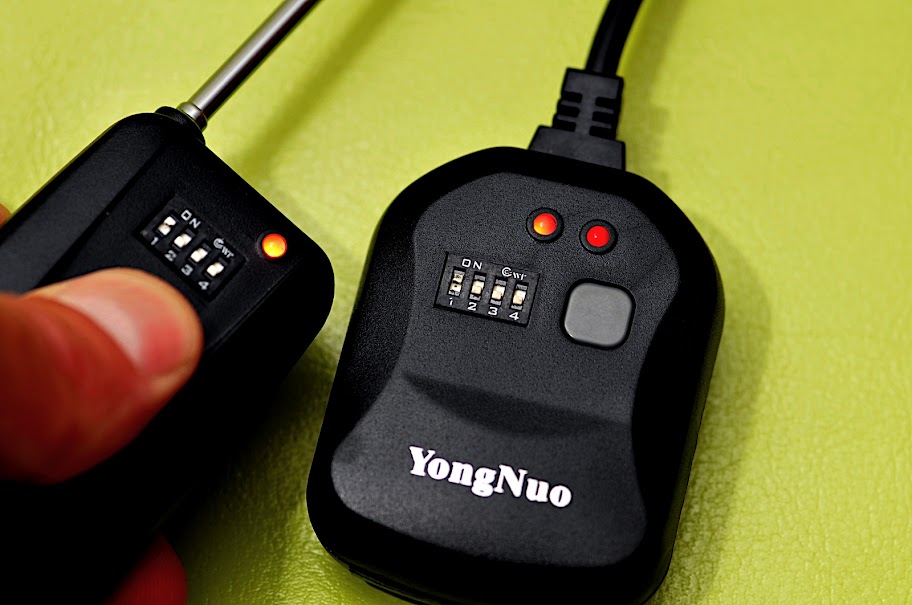
It seems to work perfectly. I didn't feel any delay when I pressed the receiver's button.
I also tried to shout on bulb mode and in continuous shooting mode and everything worked great - just like it's supposed to.The wired remote trigger from Nikon (MC-30) cost $ 80. NEW! So like most of us I tried to find it for less on Ebay and I was willing to even get slightly used in good condition.
To my surprise, what I saw, was a list of wireless remote triggers from Hong Kong with a price range of 20 to 50 US Dollars. What? No, that sounds too good to be true.
I knew that Nikon offer a wireless version (ML-3) but it cost two hundred bucks! It looks pretty good and also has a motion trigger option. I'm sure this option could be very useful for some, but at the moment it's not something I need.
The huge price difference made me very skeptical. And even though I was set on buying a wired version, at these prices, I was willing to give the cheap wireless unit a shot.
So I decided on the unit made by "YoungNuo" (???) and pressed the "buy it now" button, from the ebay store, based in Hong Kong, that has a 99.7% positive feedback rating and the total price was $ 21.80 (shipping included).
I received the package 10 days later in an padded envelope, not the best packaging in the world but the box arrived in good condition.
The package included a transmitter, a receiver, a battery and and very clear instructions.
I inserted the battery in the receiver. The Transmitter already had its battery in (ready to work strait out of the box)
The construction quality has an OK feeling, nothing special but not a cheap - flimsy appearance, it kind of feels like your regular TV remote control. It also has this tacky retractable antenna that looks the same as that old 80's wireless phone antenna. (Personally I'm OK with it).
Before you use it, you have to sync the codes on the receiver and transmitter.
Here you have a choice of 16 different channels. The four little switches need to be reached with the help of a pointy tool like the tip of a ballpoint pen. I think it's a good thing, I was a bit worried that these switches were too exposed to accidental gripping.
Because the unit is a 10 pins plug compatible with the N90, I decided to experiment first on my old camera, in case the system wasn't perfect and possibly short circuit my D300 electronics (hey you never know).
The plug fits in precisely and the securing ring screws nice and tight with no resistance.
The instructions say to turn off the camera, plug in the receiver cord then turn the camera and the receiver back on . A led light will light up red on the receiver.
At first you press halfway to activate the autofocus exactly like on your camera. The led light will turn on green on bought units.
Then press all the way down and the led light will turn red when the camera takes the picture.
It seems to work perfectly. I didn't feel any delay when I pressed the receiver's button.
I don't have a measuring tape that goes 100 feet to see if the working distance is really 100 feet like they claim it would be. But I did test it by walking away from it in my apartment and going to an other room separated by a wall. The system was still working well. I will try it in a field to see how far can I get.
CONCLUSION
Well, I'm very surprised at what I got for twenty bucks! To tell you the truth I was very skeptical. Something this cheap and made in China, famous for the mass manufacturing of toys filed with lead, would work so well. Sure, I don't know if my new remote control is poisoned with lead, but hey, I don't plan on putting it in my mouth anytime soon.
Even as excited as I am to have this unit. I have to admit that if I had 200 dollars to spare I would have bought the Nikon unit instead. Why? Because Nikon is clearly a brand I trust and it's made in Japan, not China. Most importantly, using this cheaper unit is a risk. Should this unit malfunction and damage the circuitry of my camera, my Nikon warranty may not cover it.
I'm really glad it works well and I don't know how long it's going to last but - I've got a good feeling about it and can get on with my work. The risk is worth taking at 20 bucks.
I'll be using it intensely for the next few weeks and will certainly keep you updated how it's going.
PROS
Super cheap
Simple to use
Very light to carry
Comes with batteries
Compatible with the D300
CONS
Old fashion retractable antenna
No case included to keep it together in your bag
Need time for my skepticism to go away
1 comment:
Hi,
Thanks for your review. Very Useful as I am about to embark on a similar journey. I have found the Phottix device for approx. 40 Euros (approx 52 US$) and looking at your photos it seems to be identical apart from the name tag.
Thanks again,
Wam
www.vostronics.nl
Post a Comment